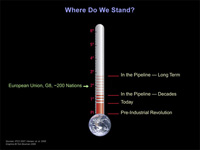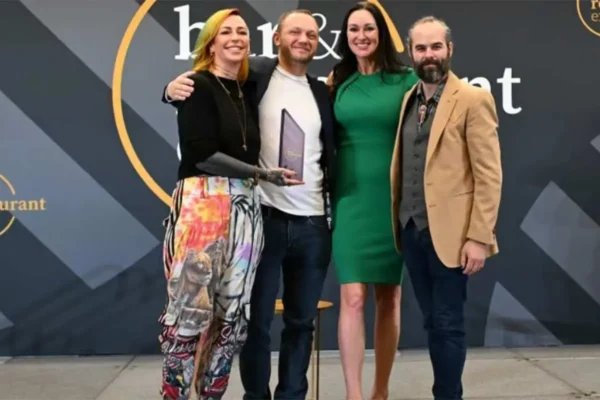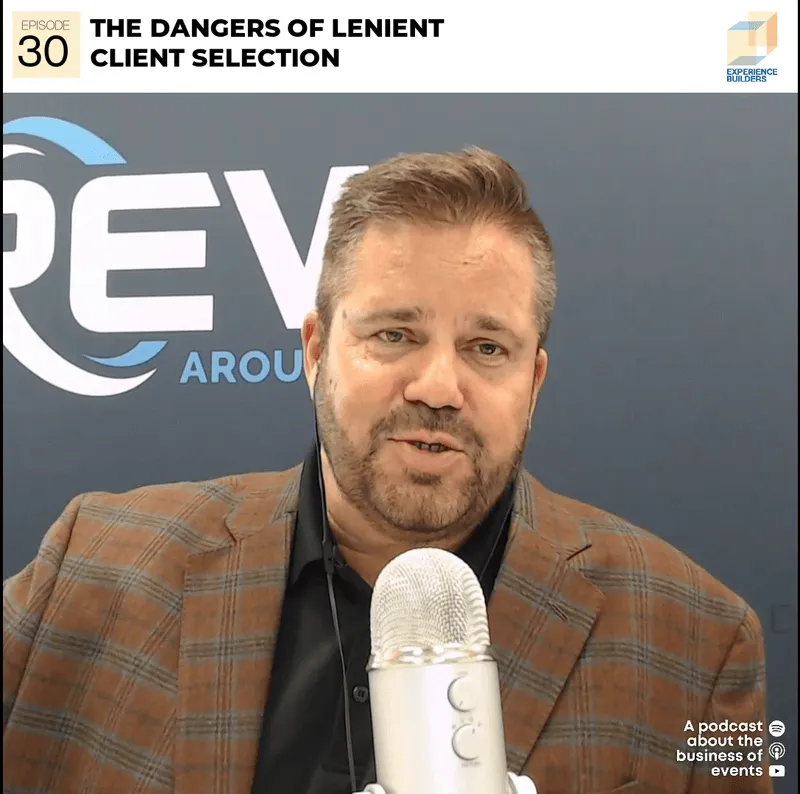 Tom Bowman, an expert in communicating scientific issues to the public and president of Bowman Global Change, has developed a series of graphics that translate key figures from the fourth Intergovernmental Panel on Climate Change (IPCC) report for public audiences. These new graphics provide non-experts access to the authentic scientific information they need to make informed decisions about climate change risks and opportunities.
Tom Bowman, an expert in communicating scientific issues to the public and president of Bowman Global Change, has developed a series of graphics that translate key figures from the fourth Intergovernmental Panel on Climate Change (IPCC) report for public audiences. These new graphics provide non-experts access to the authentic scientific information they need to make informed decisions about climate change risks and opportunities.
Bowman created the new format as a means to clearly and accurately communicate findings in the IPCC assessment to institutions, corporations, educators and consumers. Interest in Bowman’s innovative graphics has taken root in the scientific community as he is presenting a summary of the graphics for both the American Geophysical Union (AGU) and the Monterey Bay Aquarium.
His session for AGU, entitled “Translating Scientific Conclusions about Risk for Public Audiences,” takes place today at the AGU annual meeting in San Francisco, Calif. The AGU annual meeting, the nation’s largest scientific meeting for earth and space sciences, draws 16,000 geophysicists from around the world and includes scientific papers on climate change, geosciences and planetary physics.
Bowman also introduced the graphics to a national audience of aquarium science interpreters during a Dec. 3 webinar organized by the Monterey Bay Aquarium and funded by the National Oceanic and Atmospheric Administration (NOAA).
“Copenhagen: An Insider’s View” was jointly conducted with Dr. Richard Somerville, distinguished professor emeritus at Scripps Institution of Oceanography and a coordinating lead author on the IPCC’s Nobel Prize-winning report in 2007. The webinar also provided background on the history of international climate agreements and discussed the key scientific findings since 2007 as well as the policy issues facing participants in the current UN Climate Change Conference in Copenhagen.
“Tom Bowman’s clear articulation of complex scientific and political processes will help aquarium interpreters tackle this important topic with our visitors,” said Cynthia Vernon, vice president of education, guest and research programs at Monterey Bay Aquarium.
Somerville described the IPCC’s reports as “ore to be mined” for critical information. Bowman said his new format is a step forward in that process, as it clarifies scientific information that had previously been inaccessible to the public.
“Scientific writing and graphic conventions are poorly suited for communicating with non-scientists,” Bowman said.
Bowman authored a paper for the International Journal of Sustainability Communication titled “A Turning Point in Climate Change Communication Priorities,” which urges communicators and science educators to focus on specific information about climate risks that surveys indicate the public does not know.































